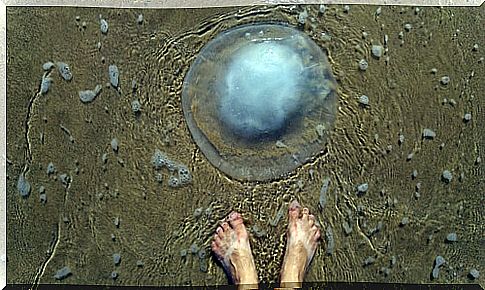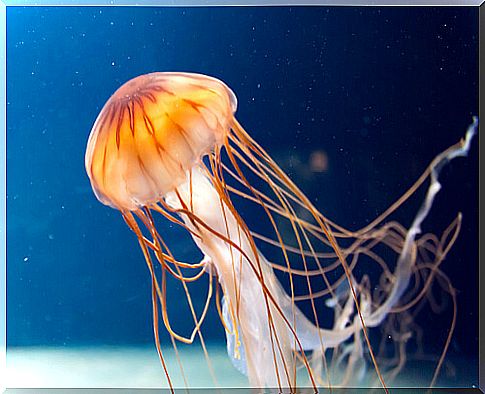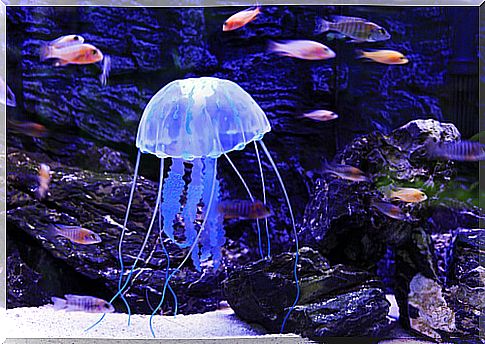How To Deal With A Jellyfish?

Also known as aguaviva or aguamala, the jellyfish is a well-known animal due to its gelatinous body, with a ‘hat’ and several legs or tentacles. As soon as we see one, we are scared because its bite is very painful. How to act in this situation? We will inform you about it below.
Characteristics of the jellyfish
First of all, it is good to learn a little about this animal so characteristic of the seas. The jellyfish is easily recognizable by its ‘bell’ shape and long veiled ‘legs’.
They also attract attention for their gelatinous appearance, because they move very fast and for this they fill that upper ‘bag’ with water. Some species of jellyfish have the ability to glow to defend themselves from predators.

The tentacles of this animal are made up of stinging cells, which serve to capture its prey or avoid being trapped. Each filament injects poison, the toxicity or risk of which will depend on the species that is bitten.
How to avoid being stung by a jellyfish?
The best way to avoid a jellyfish sting is to stay away from the areas where they normally appear. It is also recommended not to disturb or touch them even when they are dead on the seashore, since their venom remains latent for several days after death.

Among the tips so that you do not get bitten by a jellyfish, we highlight the following actions:
1. Pay attention to the surroundings
The coast guards, like local residents, will know how to inform you about the appearance or quantity of jellyfish on a particular beach or area and, above all, if it is common for people to be stung by them.
It is essential that you do not get into the water when there are too strong winds, as these ‘carry’ the jellyfish very close to the shores. If the area is prone to the appearance of ‘flowers’ or groups of this animal, change locations where possible.
2. Identify warning signs
When a beach is ‘visited’ by jellyfish regularly, there are usually signs warning tourists and travelers. Some of these signs are permanent and others are posted when the Coast Guard spot a large population of this marine animal.
3. Protect your body
If you want to go for a walk along the seashore, we recommend that you wear footwear. This will avoid contact with a dead or dying jellyfish, or even one that has been washed ashore by the current.
When you go barefoot, you have a greater chance of injuring yourself also with a stone, shell or any object that is on the beach. And you will be more vulnerable to jellyfish or crab stings!
If you want to swim or surf, it is best to wear a wetsuit to cover most of your body. Thus, if a jellyfish tries to sting you, it will be very difficult to break through the fabric and reach your skin.
4. Don’t touch jellyfish with your hand
Be very careful because this animal is often mistaken for a plastic bag thrown in the sand. Make sure it is not waste before handling it. And if you realize that it is actually a jellyfish, the first thing you should do is notify the coast guard so they can take care of removing it or returning it to the sea safely.
5. Drive them away
A good technique to prevent jellyfish from approaching you when you’ve gotten into the water is to shuffle your feet in the sand. Contrary to popular belief, the animal will not bite you, but will leave your side as quickly as possible.
And if you are very afraid to see them, the best thing you can do is get out of the water immediately, although you should do it very calmly so as not to scare it and that it reacts by biting you. Of course, being on shore, alert the coast guard to the situation.









